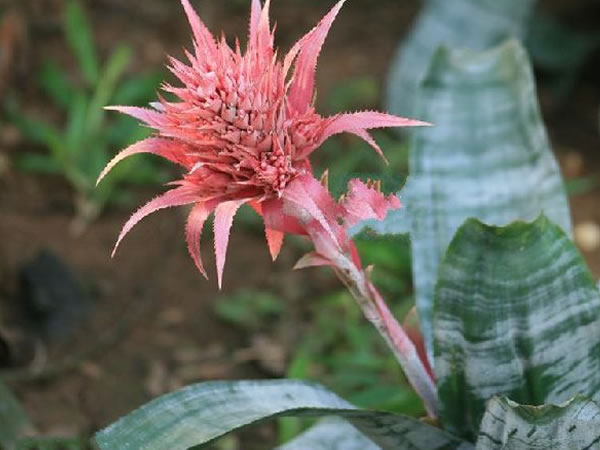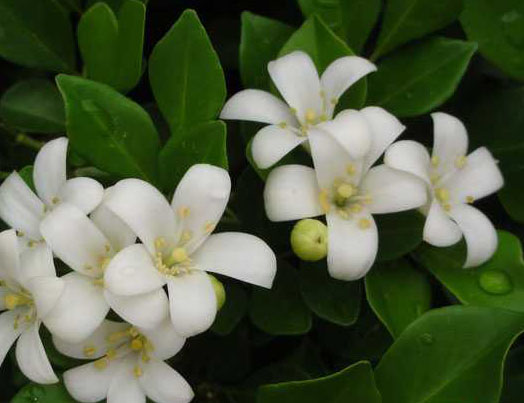How to reproduce Calyx calyx
The division method is often used in the reproduction of Calyx calyx.
After flowering, the tiller buds sprouted at the base of the plant were cut and inserted into the vegetable sand. It is best to wait for the small bud to grow to about 10 centimeters high, then cut it off from the joint of the mother plant with a clean blade, peel off the lowest leaf of the bud, and then plant it into a culture pot after a few hours of drying. When cutting, it is best to bring some original roots of the mother plant, which is beneficial to survival.
The planting depth should be no more than 1 stroke 5 with bud length. Put it in the shade after insertion to keep the basin soil dry. It can take root after 1 month at a temperature of 22-24 degrees Celsius.

I. Propagation method of Calyx calyx
The main results are as follows: 1. Ramet propagation: the suitable ramet period is from April to June. When the sucking bud grows to about 10 cm and has 3-5 leaves, first remove the whole plant from the basin, remove some basin soil, grasp the mother plant with one hand, and clamp the base of the sucking bud with the thumb and index finger of the other hand, and break the sucking bud off with oblique force. The wound was slightly dried after disinfection with fungicide and cut in perlite and coarse sand.
2. Cuttage propagation: small-scale cultivation and family cultivation, generally using tiller bud cuttage. There are several tillering buds in the axils of the basal leaves of the original plant before and after flowering. When the tillering buds grow to about 10 cm and have 3-5 leaves, cut off the short stems close to the mother plant with a sharp knife. The wound is slightly dried after disinfection with fungicides, dipped in naphthalene acetic acid with a concentration of 300-500 mg / kg, cut in perlite, coarse sand or culture soil, keep the substrate and air moist, and shade properly. New roots will grow after 1-2 months, which can be transferred to normal management. Note that the cuttings are not easy to take root when the tillering bud is too small, and it is easy to rot; when the plant is too large, it consumes too much nutrition and reduces the propagation coefficient.
3. Sowing and propagation: the sowing method of Calyx calyx can be sown in indoor pot or seedling tray. The sowing medium can be mixed with river sand, perlite and peat soil, and must be sterilized at high temperature before sowing. After sowing the seeds on the surface of the matrix, gently press them without covering the soil and cover them with plastic film or glass to moisturize. When the optimum temperature for germination is 24 ℃-26 ℃, it can germinate in about 7-14 days. When the seedlings have 3-4 true leaves, they can be transplanted into flowerpots of 4-5 cm. The sowing seedlings of Calyx calyx need to be cultured for 3-4 years before the central leaf can change color and blossom for ornamental.
Second, the beautiful leaf light calyx lotus stage
The beautiful leaf light calyx lotus blossoms in winter, and the rosette foliage folds each other into a tube. Leaves up to 60 cm long, leathery, covered with gray scales, green, with tiger-like silver-white striations, margin with small black thorns. Flowers erect, inflorescences spikelike, branched, flowers numerous. Bracts leathery, reddish or crimson. Florets sessile, light blue.
The above is the introduction of the propagation method and florescence of Calyx mandshurica, which is commonly used for ramet and cutting propagation. I hope it will be helpful to everyone.
- Prev

What are the main measures to make Jiuli fragrant flowers numerous and fragrant?
Jiuli incense is known as Qianli incense and moon tangerine. For evergreen shrub or little Joe. Small Cymes terminal or axillary, white, strong fragrance, strong diffusivity, flowering in autumn. In order to make it fragrant, potted plants should choose sandy soil rich in humus and loose and fertile. Change the second basin in the early spring every year in the young tree period.
- Next

How to grow and reproduce eggs
Frangipani is called gardenia. For little Joe. Cymes, flowered, white, yellow center, sometimes reddish, fragrant, flowering 4~7 months. Sexual likes sunny and warm environment, slightly shade resistance, not cold resistance, suitable for good drainage sandy loam. Management is extensive, because the branches are brittle and easy to break
Related
- Fuxing push coffee new agricultural production and marketing class: lack of small-scale processing plants
- Jujube rice field leisure farm deep ploughing Yilan for five years to create a space for organic food and play
- Nongyu Farm-A trial of organic papaya for brave women with advanced technology
- Four points for attention in the prevention and control of diseases and insect pests of edible fungi
- How to add nutrient solution to Edible Fungi
- Is there any good way to control edible fungus mites?
- Open Inoculation Technology of Edible Fungi
- Is there any clever way to use fertilizer for edible fungus in winter?
- What agents are used to kill the pathogens of edible fungi in the mushroom shed?
- Rapid drying of Edible Fungi

